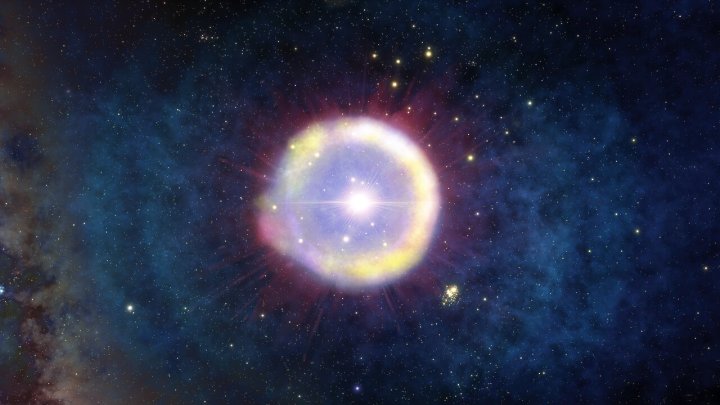As the universe has aged, the type of stars found within it has changed. Heavy elements like iron are created by the reactions which happen inside stars, and when those stars eventually run out of fuel and explode as supernovae, those heavier elements are spread around and incorporated into the next generation of stars. So over time, stars gradually gained higher levels of these heavier elements, which astronomers refer to as their metallicity.
That means that if you could look back at the very earliest stars, born when the universe was young, they would be quite different from stars today. These early stars are known as Population III stars, formed when the universe was less than 100 million years old, and searching for them has been one of the holy grails of astronomy research.

Now, astronomers using the Gemini North telescope in Hawai’i may have identified debris from these incredibly early stars for the first time. The researchers looked at a very distant quasar, a bright center of a galaxy, and observed the chemical composition of the clouds around it. They found that this composition was unusual, with a very high ratio of iron to magnesium. This indicates that the material could have been formed from a very early star that experienced a dramatic event called a pair-instability supernova. This theoretical type of supernova is extremely powerful and could happen to these early, low-metallicity stars.
By looking for the remnants of these special supernovae, the researchers had their best chance of identifying material from early stars. “It was obvious to me that the supernova candidate for this would be a pair-instability supernova of a Population III star, in which the entire star explodes without leaving any remnant behind,” said lead author Yuzuru Yoshii of the University of Tokyo in a statement. “I was delighted and somewhat surprised to find that a pair-instability supernova of a star with a mass about 300 times that of the Sun provides a ratio of magnesium to iron that agrees with the low value we derived for the quasar.”
Searching for more of these remnants of early stars could help us find more examples and help us learn about how the universe ended up as we see it today. “We now know what to look for; we have a pathway,” said co-author Timothy Beers of the University of Notre Dame. “If this happened locally in the very early Universe, which it should have done, then we would expect to find evidence for it.”
The research is published in The Astrophysical Journal.
Editors' Recommendations
- Scientists investigate star formation in the famous Whirlpool Galaxy
- NASA’s Psyche spacecraft sends back its first image of a star field
- See the stunning first images taken by the dark matter-hunting Euclid telescope
- U.S. issues its first-ever fine for space debris
- Wild ‘heartbreak’ star has waves three times the height of the sun




